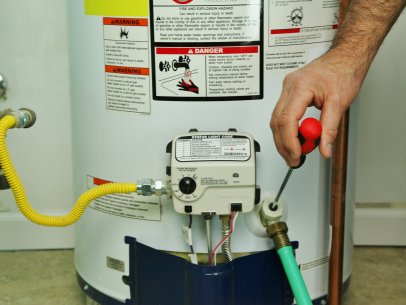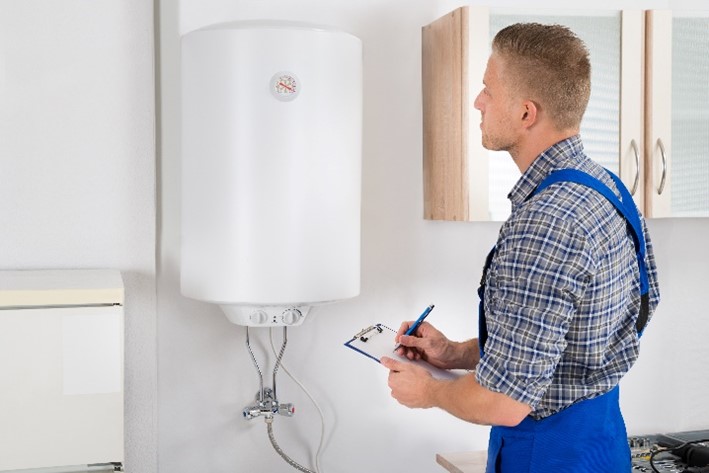Professional Tips on Maintaining Your Home's Hot Water System
Professional Tips on Maintaining Your Home's Hot Water System
Blog Article
We have stumbled upon the article involving Tips on Maintaining a Water Heater directly below on the web and thought it made good sense to discuss it with you on this site.

Warm water is necessary for everyday comfort, whether it's for a refreshing shower or cleaning meals. To ensure your hot water system runs efficiently and lasts much longer, routine maintenance is key. This write-up supplies useful ideas and understandings on exactly how to maintain your home's warm water system to stay clear of disturbances and costly repair work.
Introduction
Keeping your home's hot water system might appear difficult, but with a couple of easy actions, you can ensure it runs smoothly for years to find. This overview covers everything from understanding your hot water system to do it yourself maintenance suggestions and understanding when to call specialist help.
Significance of Maintaining Your Hot Water System
Routine maintenance not only expands the lifespan of your hot water system but also guarantees it runs efficiently. Neglecting maintenance can bring about reduced performance, higher energy expenses, and even early failure of the system.
Indications Your Warm Water System Demands Maintenance
Recognizing when your hot water system needs focus can prevent significant issues. Keep an eye out for signs such as inconsistent water temperature level, strange sounds from the heater, or corroded water.
Understanding Your Warm Water System
Prior to diving right into maintenance jobs, it's practical to understand the standard components of your hot water system. Normally, this consists of the water heater itself, pipes, anode rods, and temperature level controls.
Regular Monthly Upkeep Tasks
Normal monthly checks can help catch minor problems prior to they intensify.
Purging the Hot Water Heater
Flushing your water heater removes sediment accumulation, boosting efficiency and prolonging its life.
Checking and Replacing Anode Rods
Anode rods avoid rust inside the container. Inspecting and replacing them when worn out is essential.
Checking and Changing Temperature Level Setups
Changing the temperature level setups makes certain optimum efficiency and safety and security.
Do It Yourself Tips for Upkeep
You can perform several maintenance jobs on your own to maintain your warm water system in leading problem.
Looking for Leaks
Regularly inspect pipelines and connections for leaks, as these can cause water damage and greater bills.
Testing Stress Alleviation Valves
Checking the stress relief valve guarantees it operates properly and stops extreme pressure build-up.
Shielding Pipelines
Shielding warm water pipes reduces heat loss and can conserve power.
When to Call an Expert
While DIY maintenance is advantageous, some issues call for expert competence.
Complex Issues Requiring Specialist Assistance
Examples consist of significant leaks, electric issues, or if your water heater is regularly underperforming.
Regular Expert Maintenance Conveniences
Expert maintenance can include detailed assessments, tune-ups, and guaranteeing conformity with security standards.
Verdict
Regular maintenance of your home's warm water system is vital for efficiency, durability, and cost financial savings. By following these pointers and understanding when to seek specialist help, you can make certain a reputable supply of hot water without unforeseen disturbances.
How to Maintain an Instant Hot Water Heater
Before tinkering with your hot water heater, make sure that it’s not powered on. You also have to turn off the main circuit breaker and shut off the main gas line to prevent accidents. Also turn off the water valves connected to your unit to prevent water from flowing into and out of the appliance. 2. When you’re done, you have to detach the purge valves’ caps. These look like the letter “T†and are situated on either side of the water valves. Doing so will release any pressure that has accumulated inside the valves while at the same time avoid hot water from shooting out and burning your skin. 3. When the purge valves’ caps are removed, you have to connect your hosing lines to the valves. Your unit should have come with three hoses but if it didn’t, you can purchase these things from any hardware or home repair shops. You can also get them from retail stores that sell water heating systems. Read the user’s manual and follow it to complete this task properly. When the hosing lines are connected, open the purge port’s valves. 4. You should never use harsh chemical cleaners or solutions when cleaning your unit. Make use of white vinegar instead. It should be undiluted and you’ll probably use about 2 gallons. 5. Now flush your water heater. This task should probably take about 40 minutes. We can’t give you specific directions for this because the procedure is carried out depending on the type, model and brand of your heater. With that being said, refer to the user’s manual. 6. When you’re done draining the unit, you have to turn off the purge port valves again. Remove the hosing lines that you earlier installed on each of the water valves. Put the valve caps (purge port) back in their respective places and be very careful so as not to damage the rubber discs that are found inside these caps. 7. Now that everything’s back in place, check your user’s manual again to find out how to reactivate your water heating system. 8. Once it is working, turn one of your hot water faucets on just to let air pass through the heater’s water supply pipes. Leave the tap on until water flows smoothly out of it. https://www.orrplumbing.com/blog/2014/september/how-to-maintain-an-instant-hot-water-heater/

As a passionate person who reads on How to Maintain a Hot Water Heater in a Few Simple Steps, I assumed sharing that excerpt was important. Be sure to take the opportunity to distribute this write-up if you liked it. We truly appreciate your readership.
Schedule Now! Report this page